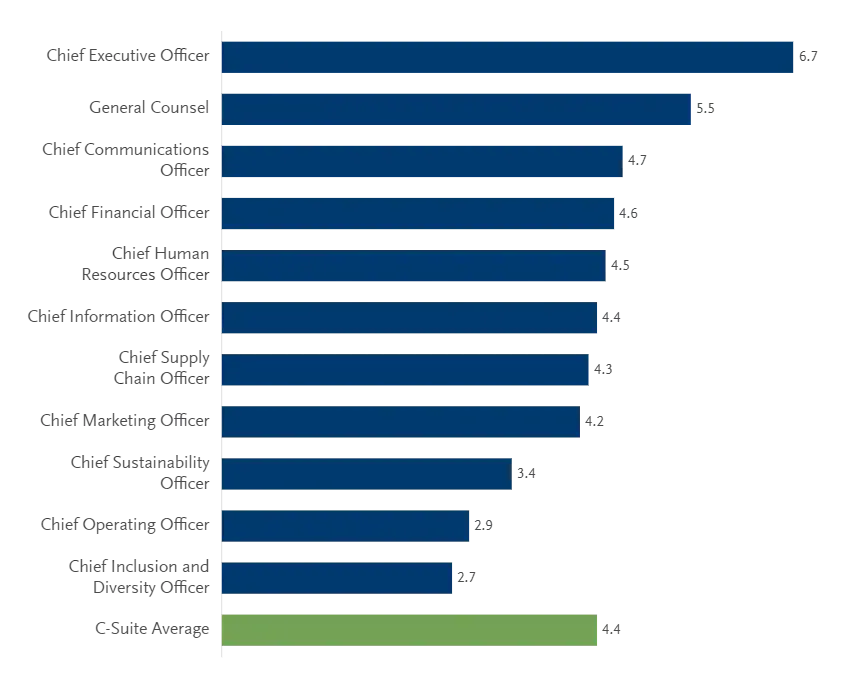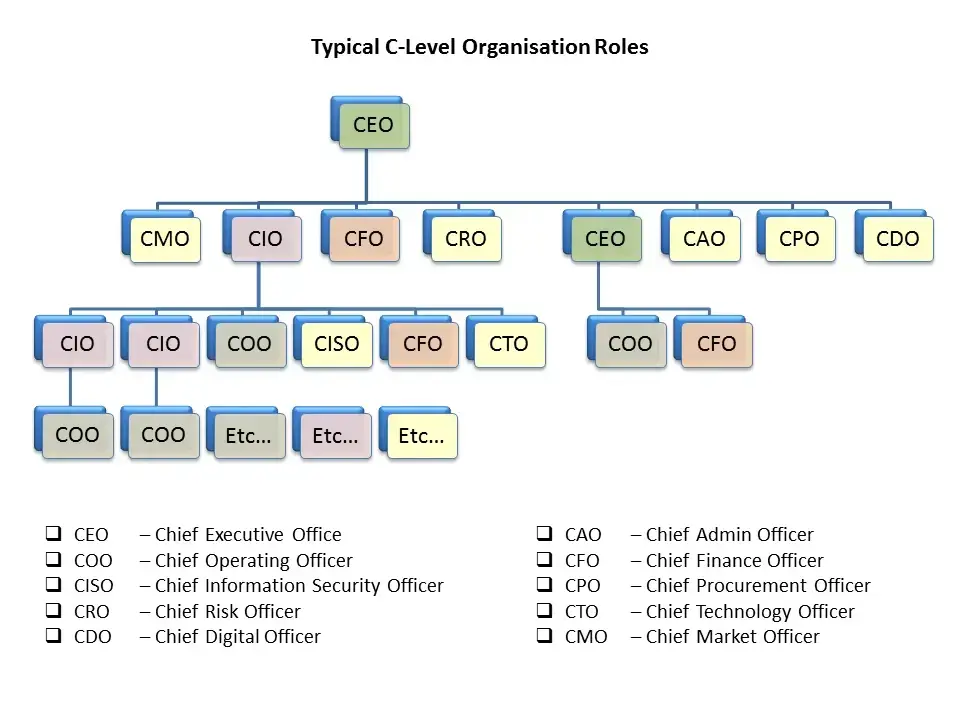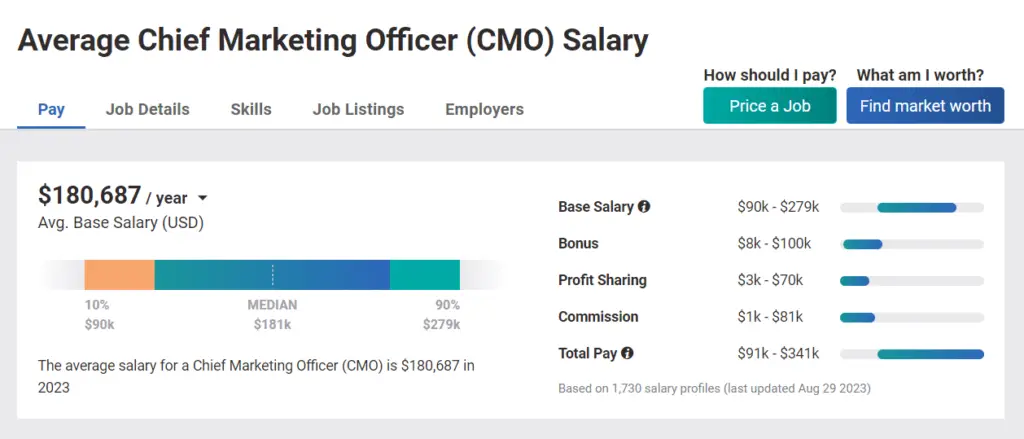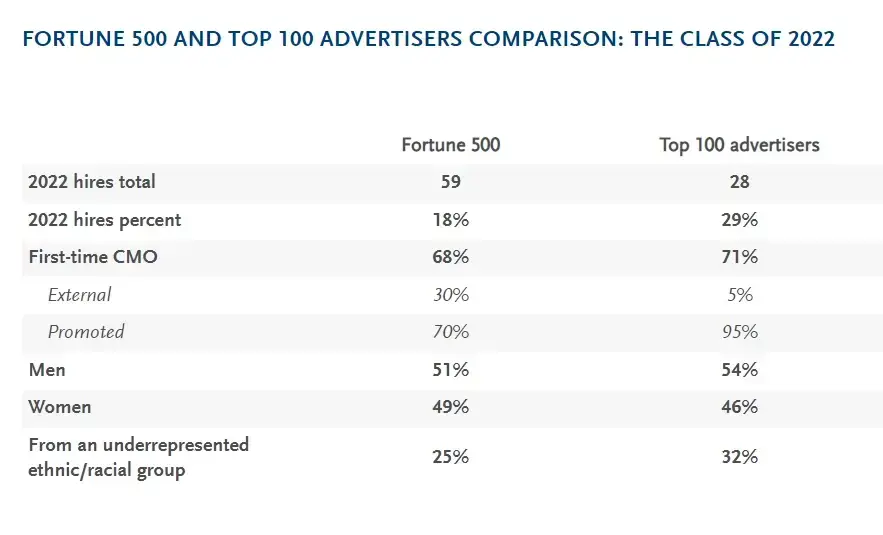So, you’ve heard the term “CMO” tossed around in board meetings or maybe read about it in those Forbes articles you skim through during your coffee break.
A Chief Marketing Officer, or CMO, is essentially the grandmaster of a company’s marketing efforts.
They’re the ones:
- Drawing up the game plans
- Directing the moves
- Saying “checkmate” to the competition with savvy ad campaigns
- Coming up with brand strategies
- And handling public relations efforts.
You might be surprised to find out that this title, often thought to be as permanent as that tattoo you got on a dare, is slowly vanishing.
According to a 2021 report, the number of companies that employ a CMO has actually dipped.
Why? What’s causing this shift?
Is the role of a CMO less relevant, or are companies just shuffling the deck chairs?
The average tenure of a CMO, as per Spencer Stuart, has been dwindling as well — down nearly 7% from the year before.

This might indicate that companies are rethinking the position altogether.
Grab your beverage of choice (no judgement here), and let’s find out why the CMO title is becoming as shifty as a reliable Wi-Fi connection in a coffee shop.
What does a CMO do, anyway?
A CMO’s role is multi-layered.
They’re not just the masterminds behind those catchy ad campaigns you can’t get out of your head.
A CMO is a strategic planner, a trend forecaster, and a team leader rolled into one.
Their job is to steer the marketing team and often work hand-in-glove with the sales team.
Why the close relationship with sales? Simple.
A CMO’s #1 responsibility is to fill those pipelines to the brim with quality leads and sales.
Their work doesn’t stop at brand awareness; they’re aiming to generate actual sales and, in the grand scheme of things, push for more profitability.
Once upon a time, they might have focused primarily on print ads, TV spots, and perhaps a billboard or two.
Now, they’re knee-deep in digital strategies, balancing SEO, social media, email marketing, and more.
So, they’ve got their hands full, juggling everything from traditional advertising to the whirlwind world of digital.
It’s like being an octopus in a juggling act, except each arm is a different facet of marketing.
And with such a jam-packed job description, you might start to see why some companies are rethinking the role altogether.
Why the change?
Times are changing, and just like you wouldn’t use a typewriter to send an email, businesses need to adapt their roles.
New technology is giving marketing the makeover of a lifetime.
Remember the days of tossing flyers and hoping for the best? Ancient history.
Nowadays, it’s all about digital reach, analytics, and automation (AI anyone?).
This shift doesn’t just add new tools to the CMO’s toolbox; it practically builds a whole new shed.
Because of this, the responsibilities once hoisted upon a single CMO can now be fragmented into specialisations.
You might have one person focusing solely on data analytics, another on customer experience, and yet another on digital strategy.
Imagine a relay race where each runner is a specialist in their leg of the track.
The rise of new titles
So, the CMO role is fading. But that chair isn’t getting cold. Companies are slotting in new roles faster than you can say “restructuring.”

Here’s what’s filling in the blanks:
Chief Growth Officer (CGO)
This person is all about business growth. Think marketing, sales, and product development in a blender.
Chief Experience Officer (CXO)
The main job? Make sure customers and employees enjoy their time with the brand.
Chief Digital Officer (CDO)
They’re the tech guru. If it’s digital and it’s important, they’re on it.
Chief Innovation Officer (CInO)
This one’s the idea factory. They’re cooking up the new stuff that keeps a company fresh. Think R&D for marketing.
Chief Revenue Officer (CRO)
Money matters, and this role is focused on just that — bringing in the cash.
Chief Brand Officer (CBO)
Brand image is their game. They ask questions like, “What vibe are we going for here?”
Chief Customer Officer (CCO)
This is the VIP of customer happiness. They want to make sure you’re more than just satisfied.
Chief Content Officer (also CCO)
Content is king, and this role makes sure it stays that way. Read more about questions to ask in content marketing consultations here.
Chief Data Officer (another CDO)
Data drives decisions. This role makes sure the company knows its numbers (KPIs).
Chief Strategy Officer (CSO)
Long-term plans? This person is drawing the map.
It’s like a specialised toolbox, where every tool has its unique use.
So why the change? We’re about to dive deeper. Grab another sip of your drink. We’re just getting started.
Money talks
So you’ve got all these new roles, and you might be thinking, “Isn’t this going to cost a lot more?”
Sometimes, yes.
But here’s the thing: some companies are ditching the CMO role for the opposite reason — saving money.

A CMO used to juggle a lot of balls in the air — branding, advertising, customer experience, you name it.
Hiring one person with the expertise to handle all that? Not cheap.
Then, add a team to support them, and the costs stack up pretty quickly.
But what if you divide those tasks?
You could have a Chief Content Officer focus solely on content, and a Chief Data Officer zeroing in on data.
These people don’t need to be Jacks-or-Jills-of-all-trades.
They just need to be really good at one thing. The result? You might be able to pay them less than a do-it-all CMO.
Plus, smaller teams might be easier to manage.
Fewer people reporting to one boss can streamline decisions and cut down on office politics.
So, in the quest to be cost-effective, the CMO sometimes gets the boot.
Does it always work? Well, that’s a story for another day.
But it’s a big reason why the nameplate outside the corner office is changing.
Fractional CMO defined — a compromise?
Now, what if a company still needs the skills of a CMO, but isn’t quite ready for that full-time commitment?
Enter the Fractional CMO.
Think of it as dating before getting hitched.
This part-time executive steps in to handle specific tasks that a full-time CMO would, but without the full-time hours or full-time salary.
So how does this stack up against a traditional, full-time CMO?
Well, a full-timer might have a broader scope, looking after everything from branding to customer relationships.
They’re often part of the company’s inner circle, deeply embedded in its culture.
A Fractional CMO, on the other hand, might zoom in on a few key areas like digital marketing or customer acquisition.
They’re more like skilled mercenaries, coming in to do a specific job and then moving on.

As for who’s using Fractional CMOs, it’s often smaller companies and start-ups. Why? They may not have the budget for a full-time exec but still need that high-level expertise.
Even larger companies going through transitions might find a Fractional CMO handy for project-specific needs.
Pros and cons of going fractional
So let’s weigh this out. On the upside, a Fractional CMO can be budget-friendly.
You’re getting expertise without the full-time financial burden.
They can also be more agile, diving into projects that need immediate attention.
But it’s not all rainbows.
One downside could be the lack of deep company knowledge.
They’re not there every day, so they might miss out on the nuances that someone more ingrained in the culture would catch.
And because they’re part-time, their focus could be split between your company and other clients.
Whether a Fractional CMO makes sense for your organisation depends on a few things, like your budget, needs, and the complexity of your marketing strategy.
So yeah, the CMO world is shifting, but options are popping up to fit different shapes and sizes, like fractional CMO agencies (which we could dive into another day).
Are companies better off?
Alright, so the CMO title is going through some sort of identity crisis.
New titles are popping up, some companies are going fractional, and others are ditching the role altogether.
The million-dollar question now is: Are companies better off with these changes?
When it comes to the CMO definition, it’s not just about marketing anymore.
The role has stretched into things like data analysis and customer experience.
Companies that have split the traditional CMO duties into specialised roles often find they can be more agile.
They can adapt quicker to market changes and pivot their strategies with less friction.
But let’s not jump on the bandwagon just yet.
The absence of a centralised CMO role can sometimes result in disjointed marketing efforts.
Without a single leader guiding the strategy, you might end up with a marketing hodgepodge that’s as confusing as a Rubik’s Cube.
A look at the numbers
If we’re talking stats, the field is still kind of new.
The switch away from a traditional CMO role doesn’t have a long history, so it’s tough to point to a long list of case studies that say “This is better” or “This is worse.”
However, companies that made the shift and succeeded often report higher efficiency and better-targeted marketing campaigns.

On the flip side, some businesses have actually re-introduced the CMO role after finding that a ship without a captain can drift off course.
So, while the jury might still be out on whether the evolution of the CMO defined role is a clear win, it’s safe to say that industries are shifting.
Like with any change, there are upsides and downsides.
Whether it’s right for your organisation depends on a lot more than just trends; it’s about what works for you.
CMO defined: What’s the future of CMOs?
Is the CMO title going extinct like the dodo bird, or is it just shedding its old feathers for a new look?
One thing’s for sure: the traditional CMO definition isn’t set in stone anymore.
The role is as dynamic as the markets it aims to conquer.
It could morph into something entirely different, perhaps more specialised or more integrated with other parts of a business.
Who knows? The CMO of the future might not even be called a “CMO.”
So, where does that leave you?
Maybe you’re an aspiring marketing whiz, or perhaps you’re running a company and contemplating organisational changes.
The takeaway here is that the role of a marketing leader is evolving, and you’ve got options.
Whether those options are better or worse depends on a few things, from your goals and budget to your willingness to adapt.
To sum up, we’ve tackled the CMO defined role and why it’s fading in some companies.
We’ve looked at the numbers, even if they’re not set in stone.
And we’ve dabbled in the notion of fractional CMOs as an alternative for businesses big and small.
As for you, think about how these changes fit into your world.
Will you be the one shaping a new era for marketing leadership, or will you stick to the classics?
Is the CMO title just going through a phase, or are we witnessing the start of a whole new chapter?
Your guess is as good as mine.

